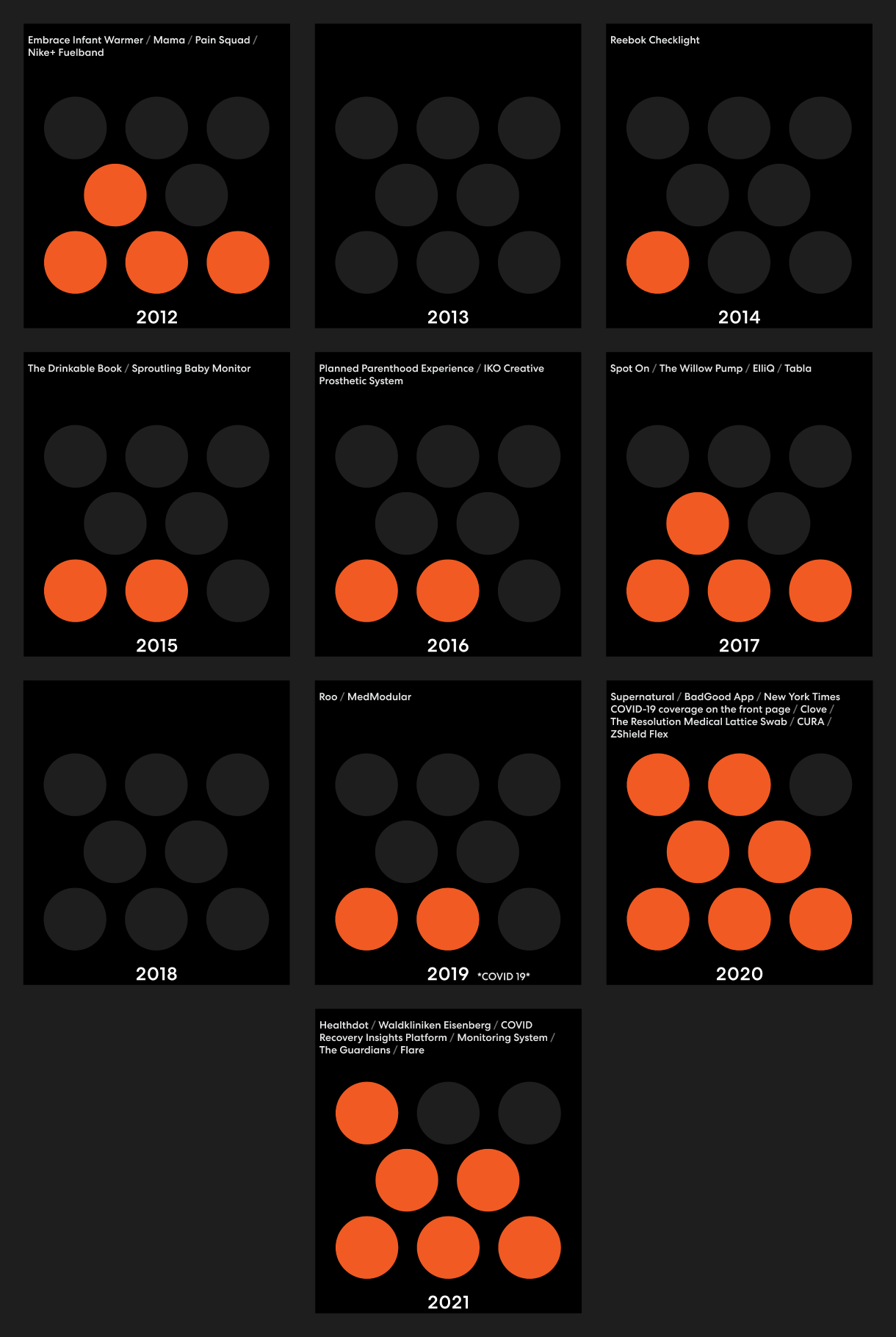One of the few silver linings of a global health crisis is that it can spur major design innovation. A famous example is the molded plywood leg splint, designed by husband and wife design duo Charles and Ray Eames as a way to transport wounded soldiers during World War II. After the war, the Eameses continued to explore molded plywood, and it became their signature production technique, leading to iconic pieces of mid-century modern furniture that remain incredibly popular today.
COVID-19 has been no different. Last year, at the height of the pandemic, a quarter of Fast Company‘s Innovation by Design Award winners came from the healthcare sector, showcasing creative solutions that spanned disciplines, from industrial design to architecture. There was a 3D-printed nasal swab shaped to make testing more comfortable for patients. There were old shipping containers converted into intensive care units. There was a series of visualizations on the front page of the New York Times that conveyed the gravity and horror of COVID-19 better than words alone ever could. The pandemic threw the world into a tailspin, and designers responded quickly, thoughtfully, and with remarkable ingenuity.

Zooming out, COVID-19 has spurred a broader reckoning in the healthcare industry, casting a spotlight on systems that have been broken for a long time. That includes everything from astronomical costs to inequitable treatment to workaday problems around how to deliver care as humanely and as effectively as possible.
For years, businesses and policymakers have enlisted designers to grapple with these problems. One of the first winners of Innovation by Design was a tiny sleeping bag made from a high-tech material that keeps premature infants warm in developing countries, where millions of babies die each year from hypothermia. The same year, 2012, an app called Pain Squad, developed by Cundari for the Hospital for Sick Children, won an award for helping children with cancer articulate their pain through a game—which in turn helped doctors fine-tune their treatment plans.
What’s different today is the sheer volume of money flowing into healthcare, as COVID-19 accelerates venture backing of health-tech companies. VC funding for healthcare shot up to $14 billion in 2020, nearly double the amount in 2019, according to Deloitte—and the momentum shows no signs of waning. These investments should enable even more inventive design ideas for healthier bodies and a healthier world. Whatever the 21st-century equivalent is of a molded plywood splint, get ready for it.
See more from Fast Company’s 2021 Innovation by Design Awards. Our new book, Fast Company Innovation by Design: Creative Ideas That Transform the Way We Live and Work (Abrams, 2021), is on sale now.
Recognize your brand’s excellence by applying to this year’s Brands That Matter Awards before the early-rate deadline, May 3.
